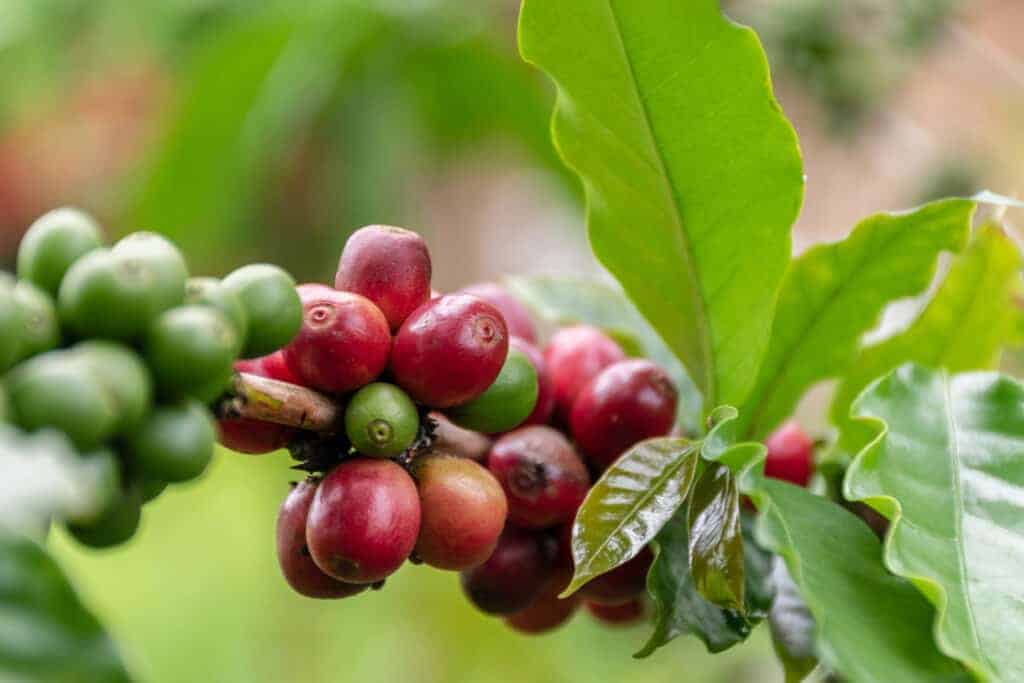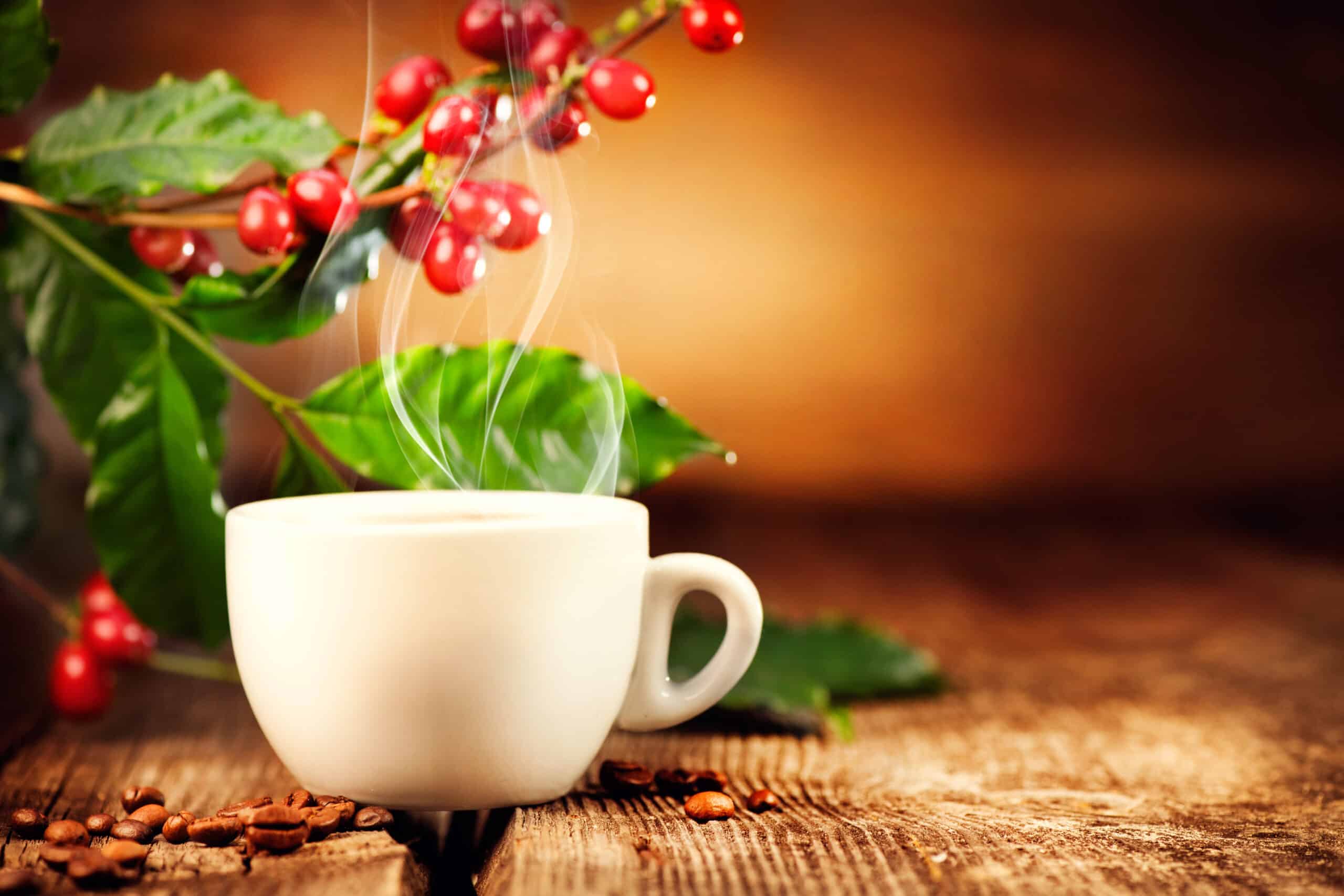I remember a coffee roaster once telling me his favorite piece of coffee trivia was that coffee beans are not beans at all. People call them beans because of how they look. Beans don’t look like leaves or branches, so I figured they must be part of the fruit. Is my cappuccino one of my five servings a day if they are the fruit?
Are coffee beans a fruit? Coffee beans are not beans; instead, they are the seeds inside a coffee cherry. Coffee is grown on trees that bear small red berries known as cherries. Inside those berries are two tiny seeds, growing flat sides together. So coffee beans are the seeds inside the fruit of a coffee tree.
Is coffee bean fruit edible? Having tried a green coffee bean (the raw bean before it is roasted), I can tell you that you can eat them, but they taste horrible and grassy. The cherry is also edible, and although I’ve not eaten a fresh coffee cherry, I’m told it’s not unpleasant and is mild and sweet. Let’s take a further look at how the coffee bean is a fruit.
The Coffee Tree
Coffee, the majority of which is a species called Arabica that grows on a tree called Coffea Arabica. These trees can only be grown (at altitude) between the Tropic of Cancer and the Tropic of Capricorn. This is why you see a lot of coffee from South America, Africa, and Asia, but none from Europe.
Another very common type is Robusta coffee. These grow on the Coffee Canephora plant and are typically grown in certain parts of Africa and Indonesia. Robusta beans are considered less superior in taste to Arabica beans. Instant coffees are generally made with Robusta.
The trees are small and bush-like, have green waxy leaves, and produce a white blossom. After the trees have blossomed, the cherries grow. These start green, and then as they ripen, they turn red. There is, however, quite a bit of variation between different varieties of coffee.

Like with apples, a granny smith looks quite different from a cox apple, which also applies to coffee. Leaves can look quite different from variety to variety. Some cherries are larger than others, and some trees bear a lot of fruit and others less fruit. The cherry can also be of different colors; different shades of red, orange, and even yellow.
If you want to learn more about Arabica coffee beans, click here!
Cherries do not all ripen at the same time either. Hence, coffee farmers often choose to pick all the coffee at once and have some underripe cherries or pay pickers to pick at two different times to harvest more perfectly ripe coffee.
It usually takes about nine months for a crop of coffee to grow and ripen, so there is only one crop per year.
However, some countries can have a second, usually smaller, lesser-quality crop. This is known as a fly crop, and although it is generally of lesser quality, one of the most delicious coffees I have ever had, happened to be from a fly crop.
Related Reading: What country does the best coffee come from?
The Coffee Seed (Bean)
As shown in the diagram below, the coffee bean grows inside the coffee cherry, two beans side by side, flat surfaces facing each other. The coffee cherry’s skin is call the exocarp and tastes bitter. Just inside the exocarp is the mesocarp which is very sweet. Lastly, there is the endocarp. The endocarp is like parchment that surrounds the seed.
Interestingly, sometimes only one bean grows inside a cherry. This is called a peaberry and is usually smaller and rounder than a standard coffee bean.

Peaberries can be roasted and consumed just as regular coffee beans are, so look out for a peaberry next time you’re buying beans. To prepare the bean for shipping and roasting, the bean is removed from the cherry on the farm or at a local processing station, then bagged ready to be shipped.
What Happens to the Fruit?
As we have now established, a coffee bean is a seed inside the coffee fruit, and we know that goes off to be roasted and then eventually drunk by us. But what happens to the fruit? It is primarily a waste product, but it is possible to squeeze the ripe fruit to make a refreshing drink.
The only downside of this is that even ripe coffee cherries aren’t very juicy, so you have to remove the beans and squeeze the cherry. A lot of work for the reward. Another option is to dry out the fruit. This is called ‘cascara’ and, in recent years, has been something South American producers have been experimenting with.
You take the dried-out coffee cherry and steep it in hot water. This produces a sweet and refreshing tea with a slight note of tobacco. It’s worth trying, and we will most likely see more cascara-based drinks in the future. If you try cascara tea and enjoy it, just be cautious as the coffee cherry contains a lot of caffeine. So a couple of cups before bed might see you awake all night!
Health Benefits of Coffee
Coffee beans contain a number of nutrients such as…
- Vitamin B2
- Vitamin B3
- Magnesium
- Riboflavin
- Potassium
- Antioxidants
According to Johns Hopkins Medicine, drinking coffee everyday can offer many benefits to the body. Some of the benefits include…
- Decreases chances of developing heart failure
- Decreases chances of developing Parkinson’s disease
- Good for your liver
- Decreases risk of depression
- Promotes weight management
Final Thoughts
Although you can’t count your morning cup of coffee as one of your servings of fruit for the day, the coffee seed comes from a cherry. Even so, coffee is moderation is good for your health, so drink up and enjoy!
